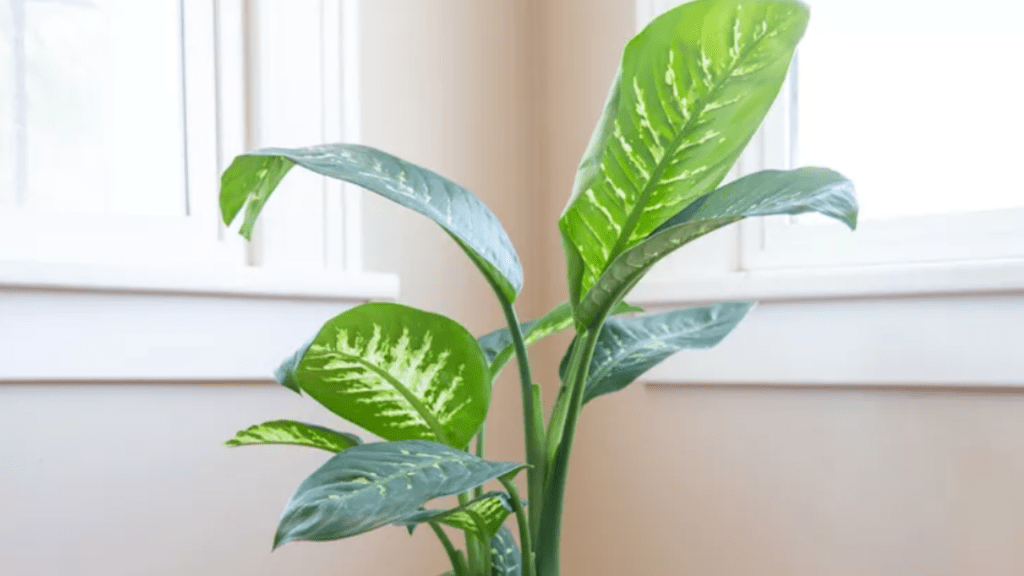
Caring for a Dieffenbachia: Essential Tips for a Thriving Plant
Dieffenbachia plants, also known as dumb cane, are popular houseplants known for their beautiful foliage and easy care. Whether you’re a seasoned plant parent or just starting out, it’s important to know the essential tips for caring for a Dieffenbachia to ensure it thrives and stays healthy. From watering to sunlight requirements and common issues to look out for, this post will provide you with all the information you need to keep your Dieffenbachia happy and thriving.
Table of Contents
ToggleUnderstanding Dieffenbachia
plants is essential for their proper care and maintenance. Dieffenbachia, also known as dumb cane, is a popular houseplant known for its beautiful foliage and low maintenance requirements. These plants thrive in indirect sunlight and need to be watered regularly, making sure the soil is moist but not waterlogged. It’s important to avoid overwatering as this can lead to root rot.
Dieffenbachia plants are sensitive to cold temperatures, so it’s crucial to keep them in a warm environment, away from drafts and extreme temperature fluctuations. They also benefit from regular fertilization during the growing season to promote healthy growth and vibrant foliage.
It’s important to be aware that Dieffenbachia plants contain toxic sap that can cause skin irritation and discomfort if ingested, so it’s essential to handle them with care and keep them out of reach of children and pets.
Overall, understanding the specific care requirements of Dieffenbachia plants, such as their sunlight, water, and temperature needs, is essential for their health and longevity. By providing the right conditions and care, you can ensure that your Dieffenbachia thrives and adds beauty to your indoor space.
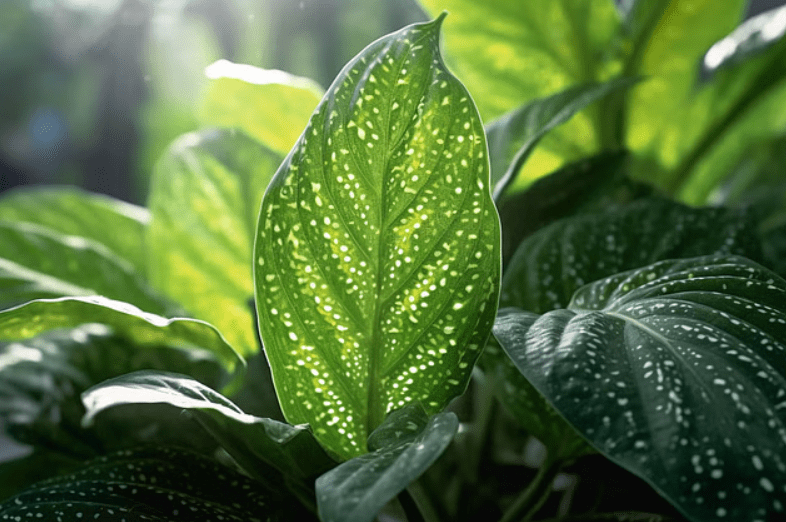
Optimal Growing Conditions for Dieffenbachia
Light Requirements: Explain the ideal lighting conditions, such as bright, indirect light, and the effects of too much or too little light.
Dieffenbachia plants thrive in bright, indirect light. Direct sunlight can scorch their leaves, so it’s important to place them in a location where they can receive gentle, filtered light. Too much sunlight can cause the leaves to fade or develop brown spots, while too little light can result in leggy growth and a lack of vibrant foliage. It’s important to find the right balance of light to ensure the plant’s health and growth. Additionally, it’s important to rotate the plant regularly to ensure even exposure to light on all sides. With the proper lighting conditions, your Dieffenbachia plant can thrive and bring beauty to your indoor space.
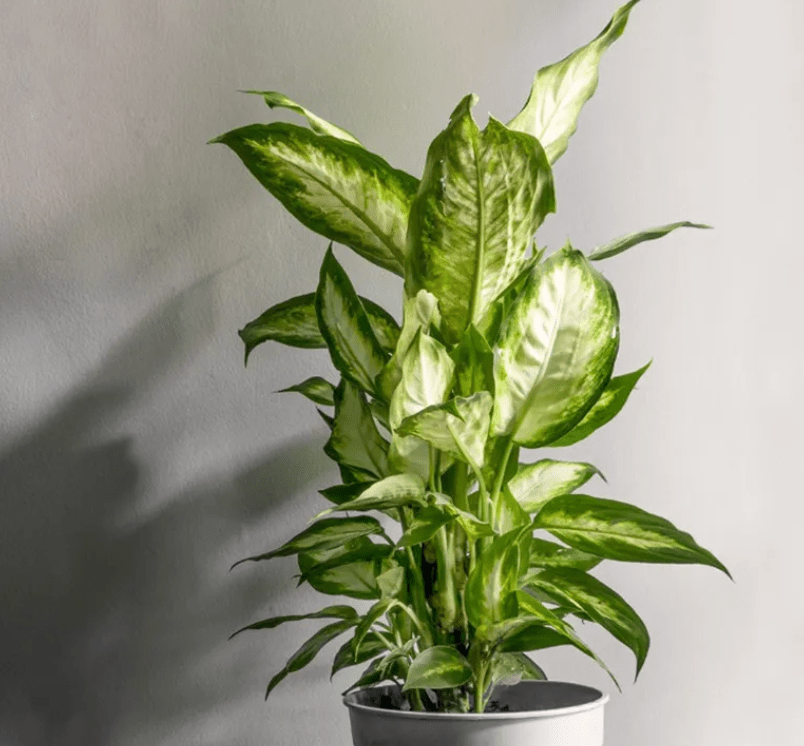
Temperature and Humidity: Discuss the best temperature range and humidity levels for Dieffenbachia, and how to maintain them indoors.
Caring for a dieffenbachia plants thrive in temperatures ranging from 65-75 degrees Fahrenheit during the day and slightly cooler temperatures at night. They are sensitive to extreme temperatures, so it’s important to keep them in a location with consistent, moderate temperatures. Additionally, maintaining a humidity level of 50-60% is ideal for Caring for a dieffenbachia plants. In drier environments, it can be helpful to use a humidifier or mist the plant’s leaves to help increase humidity. Consistent monitoring of temperature and humidity levels can help ensure the health and vitality of your Dieffenbachia plant. By providing the optimal growing conditions, you can help your plant thrive and flourish in your indoor space.
Soil and Potting: Describe the ideal soil type, drainage needs, and potting recommendations.
Dieffenbachia plants thrive in well-draining, fertile soil. A mixture of peat moss, perlite, and potting soil can provide the ideal growing medium for these plants. It’s important to ensure that the soil has good drainage to prevent water-logging, which can lead to root rot. When potting Caring for a dieffenbachia plants, it’s best to choose a container with drainage holes to allow excess water to escape. Repotting may be necessary as the plant grows, typically every 2-3 years.
Temperature and Humidity: Dieffenbachia plants thrive in temperatures ranging from 65-75 degrees Fahrenheit during the day and slightly cooler temperatures at night. They are sensitive to extreme temperatures, so it’s important to keep them in a location with consistent, moderate temperatures. Additionally, maintaining a humidity level of 50-60% is ideal for Caring for a dieffenbachia plants. In drier environments, it can be helpful to use a humidifier or mist the plant’s leaves to help increase humidity. Consistent monitoring of temperature and humidity levels can help ensure the health and vitality of your Dieffenbachia plant. By providing the optimal growing conditions, you can help your plant thrive and flourish in your indoor space.
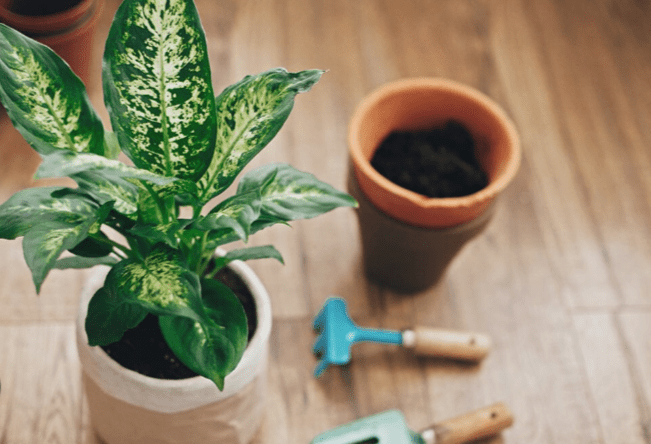
Watering Dieffenbachia
Watering Frequency: Provide guidelines on how often to water Dieffenbachia, considering seasonal changes.
Caring for a dieffenbachia plants should be watered when the top inch of soil feels dry to the touch. In general, they require watering every 1-2 weeks, but this can vary depending on factors such as temperature, humidity, and the specific growing conditions in your home. During the warmer months, when the plant is actively growing, you may need to water it more frequently. In contrast, during the winter months when the plant is in a dormant state, you may need to reduce the frequency of watering. It’s important to monitor the soil moisture and adjust your watering schedule accordingly. Overwatering can lead to root rot, so it’s important to allow the soil to dry out between waterings. By closely observing the soil moisture and adjusting your watering routine to accommodate seasonal changes, you can help ensure the health and vitality of your Caring for a dieffenbachia plant.
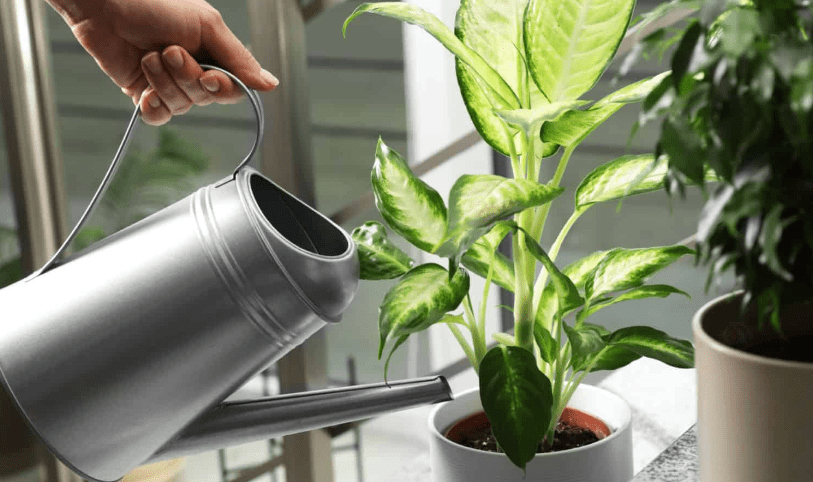
Water Quality and Method: Discuss the importance of water quality (e.g., filtered vs. tap water) and the best watering techniques.
Water quality is crucial for the health of your plants. Using filtered water or rainwater is often preferred over tap water, as it can reduce the risk of harmful chemicals and minerals negatively affecting the plant. It’s important to water your plants at the base and avoid getting the leaves wet, as this can lead to disease and mold. Additionally, allowing the soil to dry out slightly between waterings can help prevent overwatering and root rot. It’s also a good idea to use a watering can with a narrow spout to control the flow of water and avoid drenching the soil. By paying attention to the quality of the water and using proper watering techniques, you can help ensure the overall health and longevity of your plants.
Fertilizing Dieffenbachia
Types of Fertilizers: Recommend suitable fertilizers for Dieffenbachia, including organic and synthetic options.
When it comes to fertilizing Dieffenbachia, it’s important to choose a suitable fertilizer that will provide the necessary nutrients for the plant to thrive. Organic fertilizers, such as compost or fish emulsion, are great choices for Dieffenbachia as they provide natural nutrients and promote soil health. Synthetic fertilizers, such as a balanced 20-20-20 formula, can also be used to provide specific nutrients that may be lacking in the soil. It’s important to follow the instructions on the fertilizer label and avoid over-fertilizing, as this can lead to nutrient burn and other issues. Additionally, it’s recommended to fertilize Caring for a dieffenbachia during the growing season, typically in spring and summer, and reduce or stop fertilizing during the dormant season in fall and winter. Overall, choosing a suitable fertilizer and following the appropriate fertilizing schedule can help ensure the healthy growth and development of your Dieffenbachia plant.
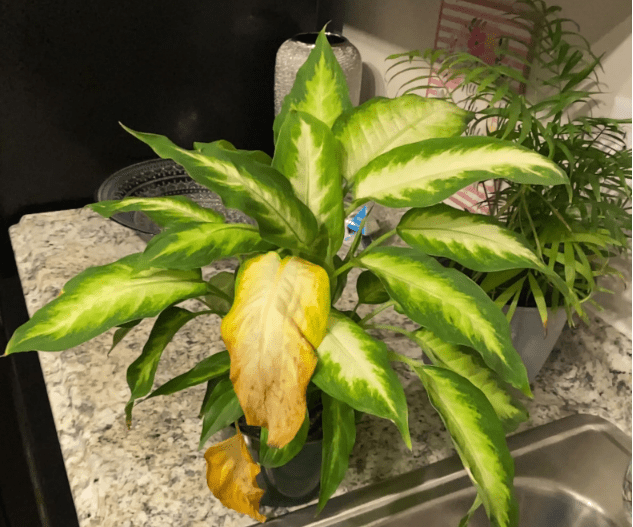
Feeding Schedule: Offer a feeding schedule, explaining when and how much to fertilize the plant for optimal growth.
Caring for a dieffenbachia plants should be fertilized every 2-4 weeks during the growing season, typically in spring and summer. It’s best to use a balanced, water-soluble fertilizer and dilute it to half the recommended strength to avoid over-fertilizing. During the dormant season in fall and winter, it’s recommended to reduce or stop fertilizing the plant to allow it to rest. Following a feeding schedule will help ensure that your Dieffenbachia receives the proper nutrients for optimal growth and health. Remember to always water your plant before and after fertilizing to prevent root burn. With the right fertilization and care, your Dieffenbachia plant will thrive and bring beauty to your home.
Pruning and Maintenance
Pruning Techniques: Explain how and when to prune Dieffenbachia to promote healthy growth and maintain its shape.
Caring for a dieffenbachia plants should be pruned to promote healthy growth and maintain their shape. It’s best to prune in the spring or early summer, as this is when the plant is actively growing. Use clean, sharp pruning shears to remove any yellow or brown leaves, as well as any overgrown or leggy stems. You can also trim back any stems to control the plant’s size and shape. Be sure to cut at a 45-degree angle to prevent water from pooling on the cut surface. Additionally, you can remove any flowers that may appear, as they can drain energy from the plant. Regular pruning will help your Dieffenbachia stay healthy and attractive. Remember to wear gloves when handling the plant, as the sap can be irritating to the skin. By following proper pruning techniques, you can help your Dieffenbachia thrive and maintain its beauty.
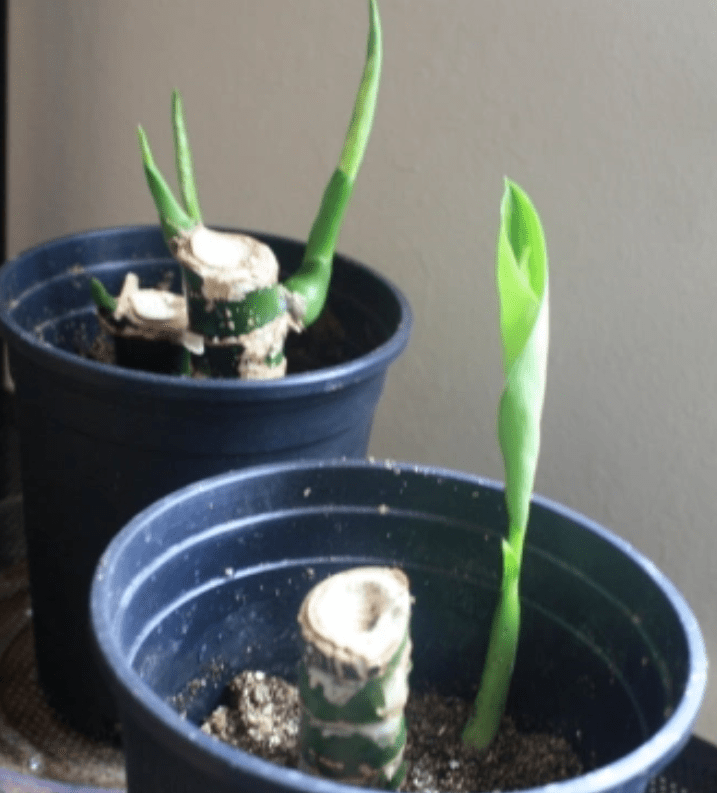
Cleaning the Leaves: Provide tips on cleaning the leaves to remove dust and enhance the plant’s appearance.
To clean the leaves of your plant, you can use a soft, damp cloth or sponge to gently wipe away any dust or dirt. Be sure to support the leaves from underneath as you clean to prevent any damage. You can also mist the plant with water to help keep the leaves clean and hydrated. Another option is to gently shower the plant with lukewarm water, being careful not to oversaturate the soil. This can help remove any build-up of dust and keep the leaves looking vibrant. Additionally, you can use a mild, diluted plant-safe soap solution to clean the leaves, being sure to rinse them thoroughly afterwards. Regularly cleaning the leaves will not only remove dust and enhance the plant’s appearance, but it will also help the plant to photosynthesize more efficiently. This will contribute to the overall health and vitality of your plant.
Common Problems and Solutions
Yellowing Leaves: Discuss potential causes of yellow leaves and how to address them.
Yellowing leaves on your plants can be a sign of various issues, so it’s important to identify the cause in order to address it properly. One common cause of yellowing leaves is overwatering, which can lead to root rot and nutrient deficiencies. Make sure to adjust your watering schedule and allow the soil to dry out between waterings. Another potential cause is nutrient deficiencies, such as a lack of nitrogen, iron, or magnesium. Consider using a balanced fertilizer to provide the necessary nutrients for your plants. Additionally, yellowing leaves can also be a result of inadequate sunlight or poor soil drainage. Be sure to place your plants in a location with sufficient sunlight and ensure that the soil has proper drainage. It’s important to regularly inspect your plants for any signs of pests or diseases, as these can also lead to yellowing leaves. If you notice any issues, address them promptly with the appropriate treatment. Keeping your plants clean and hydrated is also essential for preventing yellowing leaves. Be sure to support the leaves from underneath as you clean to prevent any damage. You can also mist the plant with water to help keep the leaves clean and hydrated. Another option is to gently shower the plant with lukewarm water, being careful not to oversaturate the soil. This can help remove any build-up of dust and keep the leaves looking vibrant. Additionally, you can use a mild, diluted plant-safe soap solution to clean the leaves, being sure to rinse them thoroughly afterwards. Regularly cleaning the leaves will not only remove dust and enhance the plant’s appearance, but it will also help the plant to photosynthesize more efficiently. This will contribute to the overall health and vitality of your plant. By identifying the potential causes of yellowing leaves and taking appropriate measures to address them, you can help ensure the health and well-being of your plants.
Pests and Diseases: Identify common pests (e.g., spider mites, aphids) and diseases that affect Dieffenbachia, along with prevention and treatment methods.
There are a few common pests and diseases that can affect Dieffenbachia plants. Some common pests include spider mites and aphids, which can cause damage to the leaves and overall health of the plant. To prevent these pests, it’s important to regularly inspect your plant for any signs of infestation and take action to remove them. This can be done by gently spraying the plant with water to dislodge the pests or using a mild insecticidal soap to treat the affected areas. Additionally, keeping the plant in a clean and well-ventilated environment can also help to prevent pest infestations.
In terms of diseases, Dieffenbachia plants are susceptible to fungal infections such as leaf spot and root rot. To prevent these diseases, it’s important to avoid overwatering and ensure that the plant has proper drainage. If you notice any signs of disease, such as discolored or wilting leaves, it’s important to take action to treat the affected areas. This can be done by removing any infected leaves and adjusting the watering schedule to prevent further spread of the disease.
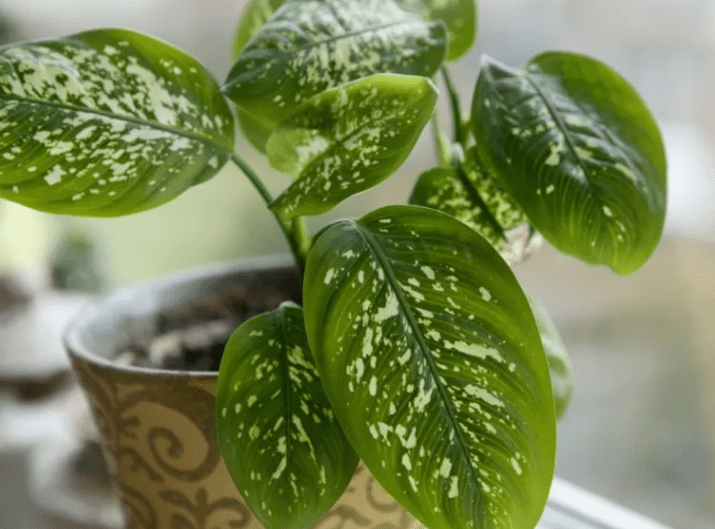
Overall, it’s important to regularly inspect and care for your Dieffenbachia plant to prevent and treat any potential pests and diseases. By taking proactive measures, you can help to ensure the health and vitality of your plant.
Overwatering and Root Rot: Explain the signs of overwatering and how to prevent root rot.
Overwatering can lead to root rot in plants, including Dieffenbachia. Signs of overwatering can include yellowing or wilting leaves, moldy or mushy soil, and a foul odor coming from the soil. To prevent root rot, it’s important to water the plant sparingly and allow the soil to dry out between waterings. Using well-draining soil and pots with drainage holes can also help prevent water from accumulating around the roots. Additionally, ensuring that the plant is in a well-ventilated environment can help prevent fungal infections like root rot. If you notice any signs of overwatering or root rot, it’s important to adjust your watering schedule and consider repotting the plant in fresh, well-draining soil. By being mindful of your plant’s watering needs and providing proper drainage and ventilation, you can help prevent the risk of root rot and keep your plant healthy.
Conclusion
In conclusion, caring for a Dieffenbachia plant is relatively easy as long as you follow a few essential tips. Make sure to water the plant regularly, but allow the soil to dry out slightly between waterings. Place the plant in a location with bright, indirect sunlight, and keep it away from drafts and extreme temperatures. Watch out for common issues such as yellowing leaves or wilting, and address them promptly to keep your plant healthy. With the right care, your Dieffenbachia plant will thrive and add beauty to your home or office.
Frequently asked questions And Answer
Dieffenbachia plants prefer bright, indirect light. Avoid direct sunlight as it can scorch the leaves.
Water your Dieffenbachia when the top inch of soil feels dry. It’s important not to overwater, as this can lead to root rot.
Dieffenbachia plants thrive in temperatures between 65-75°F (18-24°C). Avoid exposing them to cold drafts or temperatures below 60°F (15°C).
To encourage a bushy, compact growth, you can prune your Dieffenbachia by cutting back the tallest stems to a leaf node.
Yes, Dieffenbachia plants are toxic to pets if ingested. Keep them out of reach of cats and dogs, or consider choosing pet-friendly houseplants instead.
Yes, you can fertilize your Dieffenbachia with a balanced, water-soluble fertilizer every 2-4 weeks during the growing season.
Use a well-draining potting mix that retains moisture but doesn’t become waterlogged. A mix of peat, perlite, and pine bark works well.
You can propagate Dieffenbachia plants by stem or tip cuttings. Simply cut a section of stem with at least one leaf node and place it in water or moist soil to root.
